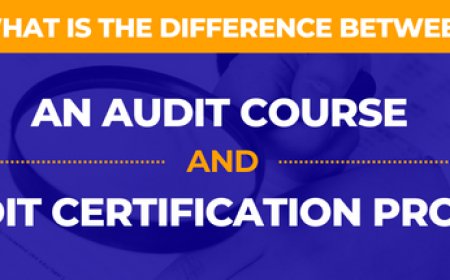How to Create a Wordpress Website
How to Create a WordPress Website Creating a WordPress website is one of the most accessible and powerful ways to establish an online presence—whether you’re launching a personal blog, a small business portal, an e-commerce store, or a portfolio site. WordPress powers over 43% of all websites on the internet, according to W3Techs, making it the most widely used content management system (CMS) in t
How to Create a WordPress Website
Creating a WordPress website is one of the most accessible and powerful ways to establish an online presence—whether you’re launching a personal blog, a small business portal, an e-commerce store, or a portfolio site. WordPress powers over 43% of all websites on the internet, according to W3Techs, making it the most widely used content management system (CMS) in the world. Its flexibility, scalability, and user-friendly interface allow beginners and professionals alike to build sophisticated websites without needing to write a single line of code.
This guide walks you through every essential step to create a WordPress website from scratch. You’ll learn how to choose the right hosting, install WordPress, customize your design, optimize for performance and search engines, and launch your site with confidence. By the end, you’ll have a fully functional, secure, and SEO-ready WordPress website that reflects your goals and resonates with your audience.
Step-by-Step Guide
Step 1: Define Your Website’s Purpose and Goals
Before you begin technical setup, clarify the purpose of your website. Ask yourself:
- Is this a blog, business site, online store, portfolio, or membership platform?
- Who is your target audience?
- What actions do you want visitors to take? (e.g., subscribe, buy, contact, download)
- Do you need multilingual support, e-commerce functionality, or membership areas?
Answering these questions will guide your choice of theme, plugins, and content strategy. For example, an e-commerce site requires WooCommerce, while a portfolio site benefits from a visual, grid-based theme. Defining your goals upfront prevents unnecessary changes later and ensures your site remains focused and effective.
Step 2: Choose a Domain Name
Your domain name is your website’s address on the internet (e.g., www.yourwebsite.com). It should be:
- Short, memorable, and easy to spell
- Relevant to your brand or niche
- Preferably a .com extension (though .net, .org, or country-specific domains work too)
- Free of hyphens or numbers unless absolutely necessary
Use domain registrars like Namecheap, Google Domains, or Porkbun to search for availability. Avoid trademarked terms and consider future scalability—your domain should still make sense if you expand your offerings. Once you find a suitable name, register it immediately to prevent others from claiming it.
Step 3: Select a Reliable Web Hosting Provider
Web hosting is where your website’s files are stored and served to visitors. Choosing the right host impacts speed, security, uptime, and support. For WordPress, look for hosts that offer:
- One-click WordPress installation
- Optimized server configurations (PHP 8.0+, MySQL 8.0+)
- Free SSL certificates
- 24/7 technical support
- Scalable plans (shared, VPS, or managed WordPress hosting)
Recommended hosting providers for WordPress include SiteGround, Kinsta, WP Engine, and Bluehost. Beginners often start with shared hosting due to its affordability ($3–$10/month). As your traffic grows, upgrade to managed WordPress hosting, which includes automatic updates, daily backups, and enhanced security.
During signup, ensure your domain is either connected to the host or pointed to its nameservers. Most hosts guide you through this process automatically.
Step 4: Install WordPress
Most hosting providers offer one-click WordPress installation. Here’s how to do it:
- Log in to your hosting account dashboard.
- Look for the “WordPress” or “Site Installer” section (often under “Website” or “Apps”).
- Select your domain from the dropdown menu.
- Choose the latest version of WordPress (always select the most recent).
- Enter your site title, admin username, password, and email address.
- Click “Install.”
The installation typically completes in under a minute. Once done, you’ll receive a confirmation message with a link to your WordPress admin dashboard (usually www.yourwebsite.com/wp-admin).
If your host doesn’t offer one-click install, you can install WordPress manually by downloading the latest version from wordpress.org, uploading the files via FTP, and running the installation script through your browser. However, one-click installation is recommended for beginners.
Step 5: Log In and Configure Basic Settings
After installation, navigate to your admin area (wp-admin). Use the username and password you created during setup.
First, update your site’s general settings:
- Go to Settings > General.
- Ensure your site title and tagline accurately reflect your brand.
- Set your timezone and date format.
- Under “Membership,” uncheck “Anyone can register” unless you plan to allow user accounts.
- Save changes.
Next, configure permalinks for SEO:
- Go to Settings > Permalinks.
- Select “Post name” (this creates clean URLs like www.yourwebsite.com/sample-post).
- Click “Save Changes.”
Also, set your reading settings:
- Go to Settings > Reading.
- Choose “A static page” for your homepage and select a page you’ll create later (e.g., “Home”).
- Set a separate page for your blog posts (e.g., “Blog”).
- Save changes.
These foundational settings ensure your site is structured for usability and search engine visibility from day one.
Step 6: Choose and Install a WordPress Theme
Themes control the visual design and layout of your site. WordPress offers thousands of free and premium themes through the official Theme Directory and third-party marketplaces like ThemeForest, Elegant Themes, and StudioPress.
To install a theme:
- In your WordPress dashboard, go to Appearance > Themes > Add New.
- Use the search bar to find themes by keyword (e.g., “business,” “portfolio,” “e-commerce”).
- Hover over a theme and click “Install,” then “Activate.”
Recommended themes for beginners:
- Astra – Lightweight, fast, and highly customizable with pre-built templates.
- GeneratePress – Minimalist, SEO-friendly, and ideal for developers and designers.
- Neve – Great for speed and mobile responsiveness.
- Divi – Drag-and-drop builder included; excellent for visual designers.
When choosing a theme, prioritize:
- Speed and performance (check PageSpeed Insights scores)
- Mobile responsiveness (test on multiple devices)
- Regular updates and developer support
- Compatibility with popular page builders (Elementor, Beaver Builder, etc.)
Avoid overly complex themes with bloated code—they slow down your site and hurt SEO.
Step 7: Customize Your Site’s Design
Once your theme is active, customize it using the WordPress Customizer or a page builder.
To use the built-in Customizer:
- Go to Appearance > Customize.
- Adjust colors, fonts, header, footer, and layout options.
- Preview changes in real time before publishing.
For more control, install a page builder like Elementor or Brizy. These drag-and-drop tools let you design pages visually without coding:
- Install and activate the plugin from Plugins > Add New.
- Edit any page and click “Edit with Elementor.”
- Drag widgets (text, images, buttons, forms) onto the canvas.
- Adjust spacing, typography, and animations using the sidebar controls.
- Click “Publish.”
Use consistent branding: stick to 2–3 fonts, a cohesive color palette, and uniform button styles. Ensure your logo is high-resolution and placed prominently in the header.
Step 8: Create Essential Pages
Every website needs core pages to establish credibility and guide visitors:
- Home – Your main landing page. Highlight your value proposition, services, or featured content.
- About – Tell your story. Include photos, team bios, and mission statement.
- Services or Products – Detail what you offer. Use clear headings, pricing, and call-to-action buttons.
- Contact – Include a contact form (use WPForms or Contact Form 7), email, phone, and map embed.
- Blog – Your content hub. Publish articles regularly to attract organic traffic.
- Privacy Policy and Terms of Service – Required by law (GDPR, CCPA) if you collect user data.
To create a page:
- Go to Pages > Add New.
- Enter a title and content.
- Use the block editor to add headings, images, lists, and buttons.
- Set a featured image for social sharing.
- Click “Publish.”
After publishing, assign these pages to your main menu:
- Go to Appearance > Menus.
- Create a new menu or edit the existing one.
- Add your pages to the menu structure.
- Assign the menu to “Primary Menu” or your theme’s main navigation location.
- Save.
Step 9: Install Essential Plugins
Plugins extend WordPress functionality. Install only what you need—too many plugins slow down your site.
Essential plugins include:
- WP Super Cache or LiteSpeed Cache – Improves site speed through caching.
- Wordfence Security – Protects against malware, brute-force attacks, and vulnerabilities.
- Yoast SEO or Rank Math – Optimizes content for search engines and generates XML sitemaps.
- WPForms Lite – Easy-to-use contact forms with spam protection.
- Smush – Compresses and optimizes images without losing quality.
- Redirection – Manages 301 redirects when you change URLs.
- UpdraftPlus – Creates automated backups of your site.
To install a plugin:
- Go to Plugins > Add New.
- Search for the plugin name.
- Click “Install Now,” then “Activate.”
After activation, configure each plugin according to its settings. For example, in Yoast SEO, set your site’s focus keywords and meta descriptions for each page.
Step 10: Optimize for Speed and Performance
Page speed directly impacts user experience and search rankings. Google considers load time a ranking factor. Aim for under 2 seconds on desktop and 3 seconds on mobile.
Optimization tips:
- Use a lightweight theme and avoid bloated page builders.
- Compress images with Smush or ShortPixel before uploading.
- Enable caching with LiteSpeed or WP Super Cache.
- Use a Content Delivery Network (CDN) like Cloudflare (free plan available).
- Minify CSS, JavaScript, and HTML using Autoptimize.
- Limit the number of active plugins.
- Upgrade to a faster hosting plan if needed.
Test your speed using Google PageSpeed Insights or GTmetrix. Review recommendations and implement changes one at a time.
Step 11: Set Up SEO and Analytics
SEO ensures your site appears in search engine results. Install Rank Math or Yoast SEO and complete the setup wizard:
- Verify your site with Google Search Console.
- Submit your XML sitemap (usually found at www.yourwebsite.com/sitemap_index.xml).
- Set meta titles and descriptions for each page.
- Use focus keywords naturally in headings, content, and image alt text.
- Ensure internal linking between related pages.
For analytics, connect Google Analytics 4 (GA4):
- Create a GA4 property at analytics.google.com.
- Copy your Measurement ID (e.g., G-XXXXXXXX).
- Install the “Google Site Kit” plugin from WordPress.org.
- Connect your Google account and paste the Measurement ID.
- Activate all data streams (Web, AMP, etc.).
GA4 provides insights into traffic sources, user behavior, conversions, and demographics—critical for refining your content strategy.
Step 12: Secure Your Website
WordPress sites are frequent targets for hackers. Strengthen security with these steps:
- Use strong, unique passwords for your admin account and database.
- Enable two-factor authentication (2FA) via Wordfence or Google Authenticator.
- Limit login attempts to prevent brute-force attacks.
- Keep WordPress core, themes, and plugins updated.
- Change the default “admin” username to something unique.
- Disable file editing in wp-config.php by adding:
define('DISALLOW_FILE_EDIT', true); - Install a Web Application Firewall (WAF) like Cloudflare or Sucuri.
Regularly scan your site for malware using Wordfence or Sucuri SiteCheck. Schedule automated backups with UpdraftPlus and store them offsite (e.g., Google Drive, Dropbox).
Step 13: Test Your Website Thoroughly
Before launching, test every feature:
- Check all links (internal and external) for broken URLs.
- Test contact forms and checkout processes (if e-commerce).
- Verify mobile responsiveness on iPhone, Android, tablets.
- Test loading speed on 3G and 4G networks.
- Ensure all images load correctly and alt text is descriptive.
- Confirm SEO meta tags appear properly in social previews (use Facebook Sharing Debugger or Twitter Card Validator).
- Check for cross-browser compatibility (Chrome, Firefox, Safari, Edge).
Use tools like BrowserStack or Responsinator for device testing. Fix any issues before going live.
Step 14: Launch Your Website
Once everything is tested and optimized, your site is ready to go public:
- Remove any “Coming Soon” or maintenance mode plugins.
- Submit your sitemap to Google Search Console.
- Request indexing of your homepage and key pages.
- Share your site on social media, email newsletters, and relevant communities.
- Announce your launch with a blog post or press release.
Remember: launching isn’t the end—it’s the beginning. Monitor analytics, gather feedback, and continue improving.
Best Practices
Content Strategy and Consistency
High-quality, original content is the backbone of any successful website. Publish consistently—whether weekly or biweekly—to build authority and keep visitors returning. Focus on solving problems, answering questions, and providing value. Use long-form content (1,500+ words) for competitive keywords, and break text with subheadings, bullet points, and visuals.
Mobile-First Design
Over 60% of web traffic comes from mobile devices. Ensure your theme is responsive and that buttons are tappable, text is readable without zooming, and forms are easy to fill on small screens. Test touch targets (minimum 48x48 pixels) and avoid hover-only elements.
Accessibility Compliance
Make your site usable for everyone, including people with disabilities. Use semantic HTML, descriptive alt text for images, sufficient color contrast (WCAG 2.1 AA), keyboard navigation, and ARIA labels where needed. Plugins like WP Accessibility can help audit and improve compliance.
Regular Updates and Maintenance
WordPress, themes, and plugins require frequent updates for security and compatibility. Set a monthly maintenance routine:
- Update core, themes, and plugins.
- Check backups and test restoration.
- Review analytics for traffic trends.
- Remove unused plugins and themes.
- Clear cache and optimize database (use WP-Optimize).
Legal Compliance
If you collect emails, use cookies, or sell products, comply with privacy laws:
- Display a clear Privacy Policy (use a generator like Termly or iubenda).
- Implement cookie consent banners (CookieYes or Complianz).
- Include Terms of Service if offering digital products or services.
- Ensure GDPR and CCPA compliance for international visitors.
Performance Monitoring
Track key metrics monthly:
- Page load time (target: < 2s)
- Bounce rate (aim for < 50%)
- Average session duration (target: > 2 minutes)
- Conversion rate (e.g., form submissions, purchases)
- Top traffic sources (organic, social, direct)
Use Google Analytics and Search Console to identify underperforming pages and opportunities for improvement.
Tools and Resources
Essential WordPress Tools
- Elementor – Drag-and-drop page builder with 100+ widgets and templates.
- WPForms – User-friendly form builder with spam protection and integrations.
- Rank Math – All-in-one SEO plugin with AI suggestions and schema markup.
- Smush – Image optimization with lossless compression and WebP conversion.
- LiteSpeed Cache – High-performance caching plugin optimized for LiteSpeed servers.
- UpdraftPlus – Reliable backup and restore solution with cloud storage support.
- Wordfence – Comprehensive security suite with firewall and malware scanner.
- Google Site Kit – Official plugin to connect WordPress with Google services.
- Cloudflare – Free CDN and WAF for speed and security enhancement.
- Canva – Design graphics, banners, and social media visuals without design skills.
Learning Resources
- WordPress.org Documentation – Official, up-to-date guides and tutorials.
- WPBeginner – Beginner-friendly articles and video walkthroughs.
- YouTube Channels – “WPBeginner,” “Sergey Mavrodi,” “Thomas Griffin.”
- Udemy Courses – “WordPress for Beginners” by Jason T. (highly rated).
- Stack Overflow – Community-driven troubleshooting for technical issues.
- Reddit: r/WordPress – Active forum for tips, feedback, and plugin recommendations.
Stock Assets and Design
- Unsplash – Free high-resolution photos.
- Pexels – Free stock videos and images.
- Google Fonts – Free, web-safe typography.
- Iconscout – Free and premium icons.
- Coolors – Generate color palettes for branding.
Real Examples
Example 1: Local Bakery Website
A small bakery in Austin, Texas, wanted to attract local customers and showcase daily specials. They chose:
- Hosting: SiteGround (shared plan)
- Theme: Astra with pre-built “Restaurant” template
- Plugins: WPForms (for reservation requests), Smush, Rank Math, LiteSpeed Cache
- Features: Online menu with images, Google Maps embed, Instagram feed, contact form
Within two weeks, they launched the site. By optimizing for local keywords (“best bakery in Austin,” “fresh bread near me”) and publishing weekly blog posts about baking tips, they increased organic traffic by 200% in three months. Their reservation form now captures 15+ leads per week.
Example 2: Freelance Photographer Portfolio
A wedding photographer needed a visually stunning portfolio to attract high-end clients. They selected:
- Hosting: Kinsta (managed WordPress)
- Theme: Neve with Elementor Pro
- Plugins: Elementor Pro (for custom galleries), Smush, UpdraftPlus, Yoast SEO
- Features: Full-screen image sliders, lightbox galleries, client testimonials, booking calendar
The site loads in under 1.5 seconds on mobile. Each gallery page includes SEO-optimized titles, alt text, and schema markup for image galleries. Within six months, they received 40+ qualified inquiries directly through the site, leading to a 3x increase in bookings.
Example 3: E-commerce Store for Handmade Jewelry
An artisan launched an online store selling handmade silver jewelry. They used:
- Hosting: WP Engine (managed WooCommerce hosting)
- Theme: Flatsome (optimized for e-commerce)
- Plugins: WooCommerce, YITH WooCommerce Wishlist, WC Product Reviews Pro, Rank Math, Smush
- Features: Product filters, customer reviews, secure checkout (Stripe/PayPal), abandoned cart emails
They optimized product pages with keyword-rich titles (“handmade silver necklace,” “minimalist jewelry for women”) and added blog content like “How to Care for Silver Jewelry.” Within four months, they achieved $12,000 in sales and ranked on page one for 12+ targeted keywords.
FAQs
Is WordPress free to use?
Yes, the WordPress software itself is free and open-source. However, you’ll need to pay for web hosting and a domain name (typically $50–$100/year). Premium themes and plugins may also cost extra, but you can build a fully functional site using only free resources.
Do I need coding skills to create a WordPress website?
No. WordPress is designed for non-technical users. With drag-and-drop builders like Elementor and pre-built themes, you can create a professional site without writing code. However, basic HTML/CSS knowledge helps with advanced customization.
How long does it take to create a WordPress website?
A simple site (5–10 pages) can be built in 1–3 days. A complex site with e-commerce, custom features, or extensive content may take 2–6 weeks. The timeline depends on your familiarity with WordPress, content readiness, and design complexity.
Can I switch themes after launching my site?
Yes, but switching themes can alter layout and styling. Always test the new theme on a staging site first. Some content may need reformatting, especially if the previous theme used custom page builders.
How do I make money from my WordPress website?
Monetization options include: affiliate marketing, display ads (Google AdSense), selling digital or physical products, offering services (consulting, design), membership subscriptions, sponsored content, and email list building.
Is WordPress secure?
WordPress is secure when properly maintained. Its core is regularly updated, but vulnerabilities often come from outdated plugins, weak passwords, or poor hosting. Follow security best practices (updates, strong passwords, backups, firewall) to stay protected.
Can I migrate my WordPress site to a new host later?
Yes. Use plugins like Duplicator or All-in-One WP Migration to export your entire site. Then import it to the new host. Most hosting providers offer free migration services for new customers.
What’s the difference between WordPress.org and WordPress.com?
WordPress.org is self-hosted software you install on your own server—it gives you full control and is free to use. WordPress.com is a hosted platform with limited customization; it offers free and paid plans but restricts plugin and theme usage on lower tiers. For full flexibility, choose WordPress.org.
Do I need an SSL certificate?
Yes. An SSL certificate encrypts data between your site and visitors, securing forms and logins. It’s also a Google ranking factor. Most hosts provide free SSL via Let’s Encrypt—enable it during setup.
How often should I back up my WordPress site?
For blogs or small business sites, weekly backups are sufficient. For e-commerce or high-traffic sites, daily backups are recommended. Always keep at least two backup copies—one local, one in the cloud.
Conclusion
Creating a WordPress website is no longer a complex technical endeavor—it’s an achievable, empowering process that puts the power of the internet directly in your hands. From selecting a domain and hosting to designing a beautiful, functional site and optimizing it for search engines and users, every step outlined in this guide builds toward a professional, high-performing online presence.
Remember: success doesn’t come from launching a website—it comes from maintaining it. Regular updates, consistent content, performance monitoring, and user feedback are what transform a static site into a dynamic, growing asset. Whether you’re a solopreneur, small business owner, or creative professional, your WordPress website is your digital storefront, portfolio, and voice—all in one.
Start simple. Focus on value. Iterate based on data. And don’t wait for perfection—launch, learn, and improve. With WordPress, you have everything you need to build something meaningful. Now, take the next step. Your website is waiting.

























